-
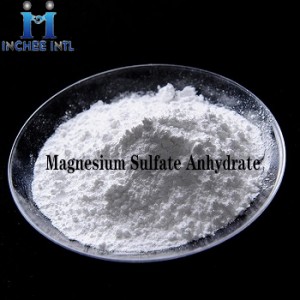
Manufacturer Good Price Magnesium Sulfate Anhydrate CAS:7487-88-9
Magnesium sulfate, also known as sulfur bitterness, bitter salt, diarrhea salt, and diarrhea, is a magnesium -containing compound. The appearance is colorless or white and easy -to -winded crystal or white powder. No smell. There is bitter salty. Handling. Magnesium sulfate lost six molecular crystal water at 150 ° C, and lost all crystal water at 200 ° C. The density of no aquatic material is 2.66, the melting point is 1124 ° C, and it is decomposed at the same time. Easy to dissolve in water, soluble in alcohol, ether and glycerin, insoluble in pyruis. Magnesium sulfate is a commonly used chemical reagent andids. Magnesium sulfate wet compresses have the functions of anti -inflammatory and swelling, which can reduce local tissue damage. Magnesium sulfate wet compress and plastic wrap is an effective method for treating chemotitis. one.
CAS: 7487-88-9
-
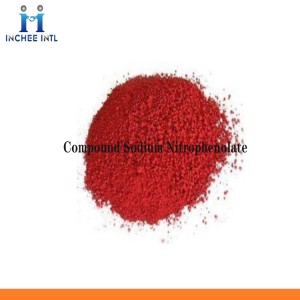
Manufacturer Good Price Compound Sodium Nitrophenolate CAS:67233-85-6
Compound Sodium Nitrophenolate (also known as sodium nitrophenol complex) is a powerful cell activator, the chemical composition is 5-nitroguaiacol sodium, sodium o-nitrophenol, sodium p-nitrophenol. After contact with plants, it can quickly penetrate into the plant body, promote cell protoplasm flow, and improve cell viability. At the same time, it is also a compound plant growth regulator containing several sodium nitrophenol salts (some products are amine salts), whose chemical formula is C6H4NO3Na, C6H4NO3Na, C7H6NO4Na. Developed by a Japanese company in the 1960s, the product is 1.8% water agent.
Synonyms:2-methoxy-5-nitro;AtonikG;2-methoxy-5-nitrophenolate;2-Methoxy-5-nitrophenolsodiumsaltSolution,100ppm;2-MetChemicalbookhoxy-5-nitrophenolsodiumsaltSolution,1000ppm;nitroguaiacolsodiumsalt;Sodium2-methoxy-5-nitrophenoxide;ATONIK
CAS: 67233-85-6
-
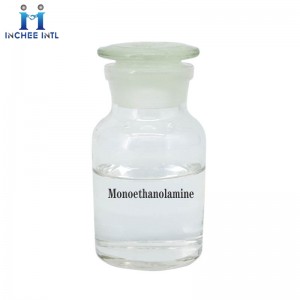
Manufacturer Good Price Monoethanolamine CAS:141-43-5
Monoethanolamine is a kind of viscous hygroscopic amino alcohol contains both amine and alcohol chemical groups. Monoethanolamine is widely distributed inside the body and is a component of lecithin. Monoethanolamine has many kinds of industrial applications. For example, Monoethanolamine can be used in the production of agricultural chemicals including ammonia as well as the manufacturing of pharmaceuticals and detergents. Monoethanolamine can also be used as a surfactant, fluorimetric reagent and removing agent of CO2 and H2S. In pharmaceutical field, ethanolamine is used as a Vascular Sclerosing agent. Monoethanolamine also has antihistaminic property, which alleviates the negative symptoms caused by H1-receptor binding.
CAS: 141-43-5
-

Manufacturer Good Price Magnesium Sulphate Heptahydrate CAS:10034-99-8
Magnesium sulfate heptahydrate (MgSO4·7H2O), also known as sulfur bitter, bitter salt, cathartic salt, Epsom salt, is a white or colorless needle or oblique columnar crystal, odorless, cool and slightly bitter, molecular weight :246.47, specific gravity 1.68, easily soluble in water, slightly soluble in ethanol and glycerol, in 67.Chemicalbook5℃ dissolved in its own crystal water. Heat decomposition, 70, 80℃ is the loss of four molecules of water of crystal. At 200℃, all crystalline water is lost to form anhydrous substance. In the air (dry) easily weathered to powder, heating gradually removed the crystal water into anhydrous magnesium sulfate, this product does not contain any toxic impurities.
CAS: 10034-99-8
-
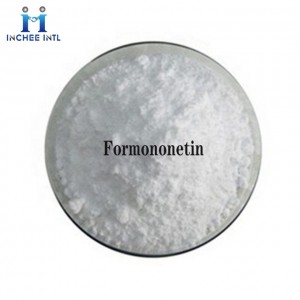
Manufacturer Good Price Formononetin CAS:485-72-3
Formononetin (485-72-3) is a naturally occurring isoflavone isolated from Astragalus and other plants. Increases adipocyte thermogenesis by modulating PPARγ activity.1.Activates AMP-activated protein kinase/β-catenin signaling to inhibit adipogenesis.2.Accelerates wound repair by increasing expression of Egr-1 transcription factor.3.Potential cancer chemopreventive and chemotherapeutic.4.Provides neuroprotection against traumatic brain injury by inhibition of neuroinflammation in a rat model.
Chemical properties: White crystal powder, soluble in methanol, ethanol, acetone, is derived from astragalus root stems. The inflorescences and flower branches and leaves of the bean -based plant red car shaft (Trifoliumpratense) are extracted from the whole grass (ononis spinosa).
CAS: 485-72-3
-
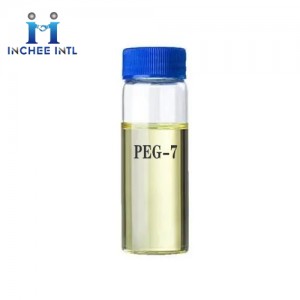
Manufacturer Good Price PEG-7 Glyceryl Cocoate CAS:68201-46-7
PEG-7 Glyceryl Cocoate is a hydrophilic moisturizing ester made of natural oil and ethylene ethylene reactions.PEG-7 Glyceryl Cocoate can be used to supplement oil and fat additives for the surface activated agent system. Sexual wool, as a soluble in transparent products, can maintain the balance of the skin and hair, reduce the sense of dryness, increase the lubrication of the skin and hair, and apply to various baths and water products.
CAS: 68201-46-7
-

Manufacturer Good Price Monoammonium Phosphate CAS:7722-76-1
Monoammonium Phosphate is a transparent, piezoelectric crystal containing no water of crystallization. Single crystals of this material were originally developed for use in underwater sound projectors and hydrophones.
Monoammonium Phosphate is a colorless transparent tetragonal crystal. soluble in water, slightly soluble in alcohol, insoluble in acetone.
Monoammonium Phosphate or monoammonium phosphate is formed when a solution of phosphoric acid is added to ammonia until the solution is distinctly acid. It crystallizes in quadratic prisms. Monoammonium Phosphate is often used in the blending of dry agricultural fertilizers. It supplies soil with the elements nitrogen and phosphorus in a form which is usable by plants. The compound is also a component of the ABC powder in some dry powder fire extinguishers.CAS: 7722-76-1
-

Manufacturer Good Price Hesperidin CAS:520-26-3
Hesperidin is a flavonoids, which has the structure of hydrogenoflavonoid oxyladin and is weakly acidic. Pure products are white needle crystals, which are the main components of vitamin P. After hydrogenation of orange peeling, Hesperidin is a natural sweetener dihydrogen detection. The sweetness is 1000 times that of sucrose, which can be used as functional food. Hesperidin has a variety of biological characteristics. Modern research has found that orange pepperin can antioxidant and anti -cancer, mold -proof, anti -allergic Chemicalbook, lowering blood pressure, inhibit oral cancer and esophageal cancer, maintain osmotic pressure, enhance capillary blood toughness , Reduce cholesterol and other effects. Related studies have shown that Hesperidin has a broad -spectrum inhibitory effect on common contaminated bacteria for food, and has significant inhibitory effects on Bacteria Bacteria, Rat Thalette Salmonella, Visatus, Hedar Coccus, and cholera. Therefore, it is widely used in food additives and food processing.
CAS: 520-26-3
-

Manufacturer Good Price Phosphorous Acid 85% CAS:7664-38-2
Phosphorous Acid is also known as orthophosphate (molecular structure H3PO4), pure product for colorless transparent viscous liquid or square crystal, odorless, very sour taste. 85% Phosphorous Acid is a colorless, transparent or slightly light, thick liquid. Melting point 42.35℃, specific gravity 1.70, high boiling point acid, can be soluble with water at any ratio, boiling point 213℃ (losing 1/2 water), pyrophosphate will be generated. When heated to 300℃, it becomes metaphosphoric acid. Relative density 181.834. Soluble in water, soluble in ethanol. Phosphorous Acid is a common inorganic acid in Chemicalbook. It is a medium and strong acid. Its acidity is weaker than strong acids such as sulfuric acid, hydrochloric acid and nitric acid, but stronger than weak acids such as acetic acid, boric acid and carbonic acid. When Phosphorous Acid reacts with sodium carbonate at different pH, different acid salts can be formed. Can stimulate the skin to cause inflammation, damage the body tissue. Concentrated Phosphorous Acid erodes when heated in porcelain. It is hygroscopic and sealed. Commercially available Phosphorous Acid is a viscous solution containing 482% H3PO. The high viscosity of Phosphorous Acid solution is due to the existence of hydrogen bonds in the solution.
CAS: 7664-38-2
-
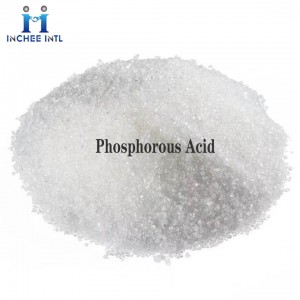
Manufacturer Good Price Phosphorous Acid CAS:13598-36-2
Phosphorous acid is an intermediate in the preparation of other phosphorous compounds. Phosphorous acid is a raw material to prepare phosphonates for water treatment such as iron and manganese control, scale inhibition and removal, corrosion control and chlorine stabilization. The alkali metal salts (phosphites) of phosphorous acid are being widely marketed either as an agricultural fungicide (e.g. Downy Mildew) or as a superior source of plant phosphorous nutrition. Phosphorous acid is used in stabilizing mixtures for plastic materials. Phosphorous acid is used for inhibiting high-temperature of corrosion-prone metal surfaces and to produce lubricants and lubricant additives.
CAS: 13598-36-2






